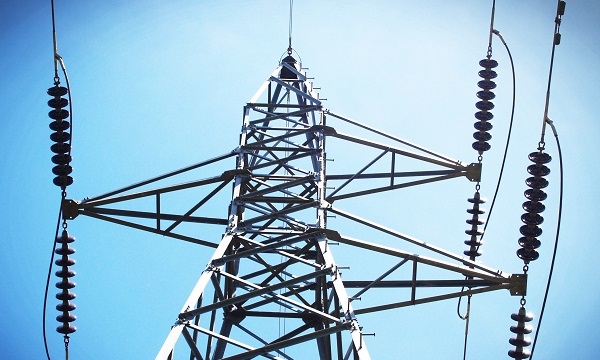
5G's success in Singapore hangs on competition and consumer acceptance
Investors dread that multiplayer competition and consumer sentiments might hinder its roll out.
Since talks of 5G availability circulated in the Asia Pacific, Singapore and the Infocomm Media Development Authority (IMDA) have rolled out bids for four spectrum bands—two nationwide and two local—to the four major telco players: Singtel, StarHub, M1 and Australia-based TPG Telecom.
“5G, with its high-speed, low-latency and private networking capabilities, will create massive opportunities for new applications and services that will impact our society and how everyone lives, works and plays. StarHub is conducting trials and proof-of-concepts with its 5G ecosystem of technology, business, institutes of higher learning and public agency partners,” Sebastian Tan, head of 5G Centre of Excellence at StarHub, said in a statement.
“A portion of StarHub’s network is 5G-ready today to facilitate trials in the lead up to eventual commercialisation. The company is broadcasting ‘live’ 5G signals from its headquarters and has identified areas at which to expand its initial 5G coverage,” Tan added.
IMDA added that they want a full-fledged 5G standalone capability covering at least half of Singapore by end-2022, but both consumers and investors alike do not seem too keen on its arrival.
In a survey conducted by Maybank Kim-Eng last October, 74.7% of the respondents were not willing to pay more for 5G connectivity against 4G. The results are said to be consistent with telco service providers’ general stance that the retail consumer base case for 5G is “not developed to a degree that requires immediate major investment.”
In a comment by another analyst from a bank, who refused to be identified, consumers’ willingness to pay more for 5G depends on more than just speed.
“4G is already adequate for video streaming, etc. Higher video standards and applications may eventually demand that but as of today, especially in Singapore where both wireless and wired broadband is readily available and decently fast, the timing of commercial viability is not clear,” he further explained.
Apart from the thought of not needing 5G at the moment, there is also the issue of the devices’ compatibility to 5G. The analyst said that 5G’s viability will rely on applications being developed against the niche industrial applications (e.g., factories, robots).
On the investors’ side, they see the risks of multiplayer competition.
“With potential four-way competition in industrial areas, higher investment risks will be factored in by would-be mobile network operators (MNO) bidders. It may also dampen interest in the localised licenses,” said Luis Hilado, analyst at Maybank Kim-Eng, in a note.
Hilado added that investors are waiting for the returns on 5G capex, which creates an overhang in the sector.
In a separate report by Fitch Ratings, another issue in 5G is if Singapore would be able to have access to a sufficient and affordable spectrum. As of now, Singapore uses the 3.5GHz band for satellite communications which can only be freed up by 2021. Fitch Ratings stated that the $55m-base price for 100MHz of the 3.5GHz frequency translates to 9.5 cents (US$0.07) per MHz per capita, which is cheaper than Hong Kong's recent 5G spectrum auction at 12 cents (US$0.09).
“The current business case for 5G is insufficient to justify the need for a standalone network; it is likely the ecosystem may take a few more years to mature. Early 5G deployments in South Korea, the US, Australia and Europe have been based on non-stand alone specifications,” the report stated.
Fitch Ratings cited South Korea as an example, reportedly the most advanced 5G market, where even telcos are struggling to boost operating cash flows, as higher marketing cost from generous handset subsidies more than offset increased wireless revenue from the upselling of expensive unlimited 5G mobile plans.
The analyst, who refused to be named, also described what could be the worst case scenario for Singapore’s 5G rollout: as with the current 4G state, wireless pricing could become disrupted and never recover, whilst investments in new technology compatible with 5G will be wasted as it may not unlock new revenue streams.
“I doubt anyone expects any operator in any country deploying startup technology with limited or no pricing power to escape the short- to medium-term cashflow pressure,” he said. “This is typically why for developing countries the major investments in what is today’s new technology would take place later on, when the mass market and ecosystem is developed and equipment becomes cheaper.”
Future of 5G
Despite these issues, Fitch Ratings believes that the 5G spectrum allocations are sufficient for the next three years, until more spectrum bands such as the 2.1GHz and 4.5GHz become available for 5G use.
IMDA proposed that the MNO spectrum packages to be awarded will comprise 100MHz of 3.5GHz frequency, each paired with one lot of 800MHz of millimetre wave. Data from the GSM Association said that each 5G network would require at least 80-100MHz of contiguous spectrum for mid-bands and 1GHz in the millimetre wave band to provide a true 5G experience.
Analysts also noted that 5G will likely work if two or three telcos would be willing to team up, instead of competing over one particular area and leaving the other regions without such a network. Both Fitch Ratings and DBS Group Research have projected that M1 and StarHub are likely work together, building on the current partnership that they have in 4G in order to save on opex and capex.
“A shared network model enhances the feasibility of 5G, by providing scale advantages and capacity for leverage for telcos. Successful spectrum holders of the 3.5GHz will be required to provide 5G wholesale services, enabling mobile virtual network operators (MVNO) to lease network space without significant cost outlays,” stated Fitch.
Singtel, due to its healthy balance sheet, is expected to do a solo bid. Fitch Ratings said that it is “well-placed to win a 5G spectrum.”
























 Advertise
Advertise






